Spatial
Kate Ashworth A Living Tapestry of Watery Bodies
-
Tauira / Student
Kate Ashworth -
Kaiako / Lecturers
Jen Archer-Martin, Georgina Stokes

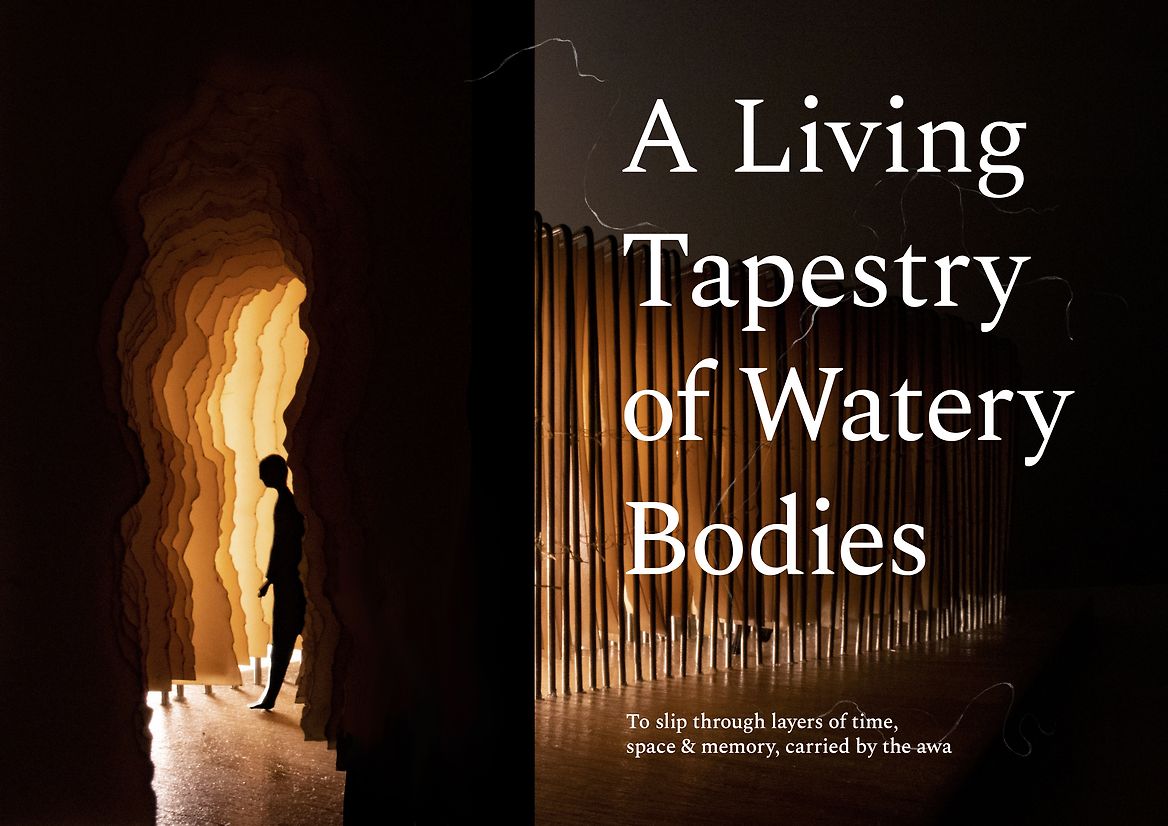
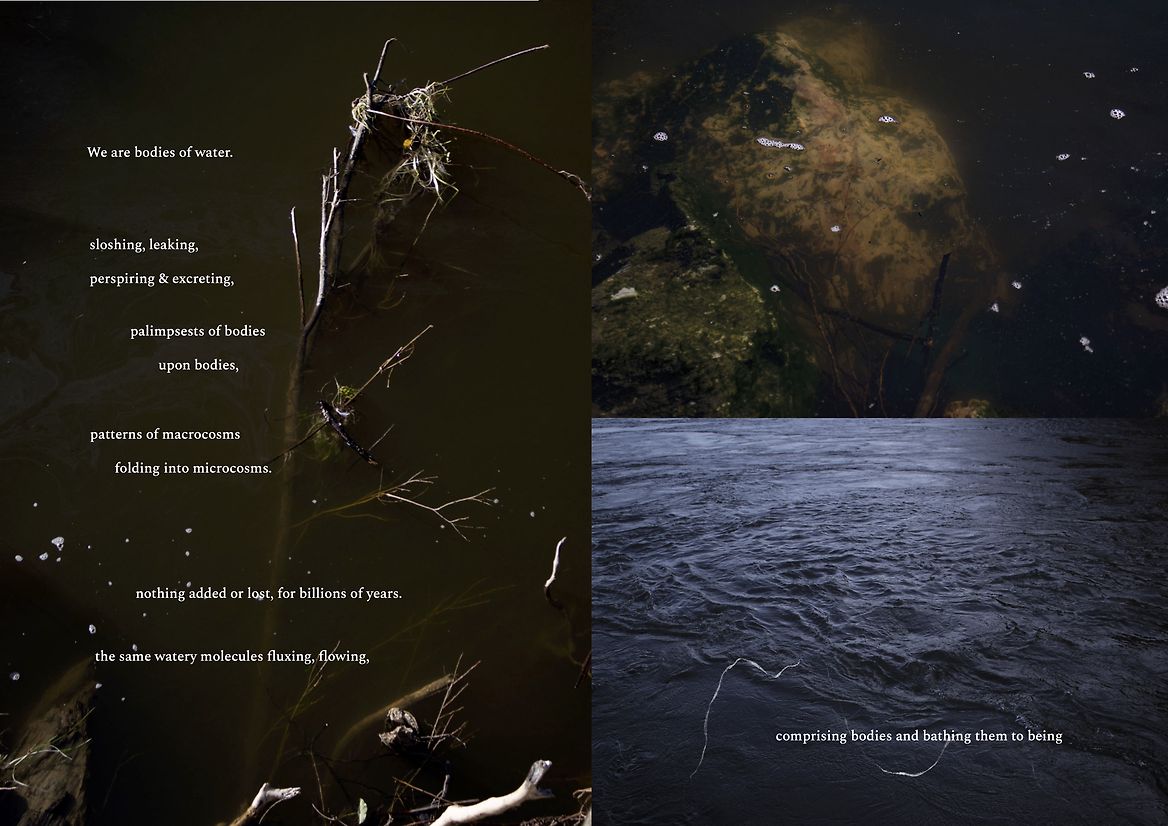

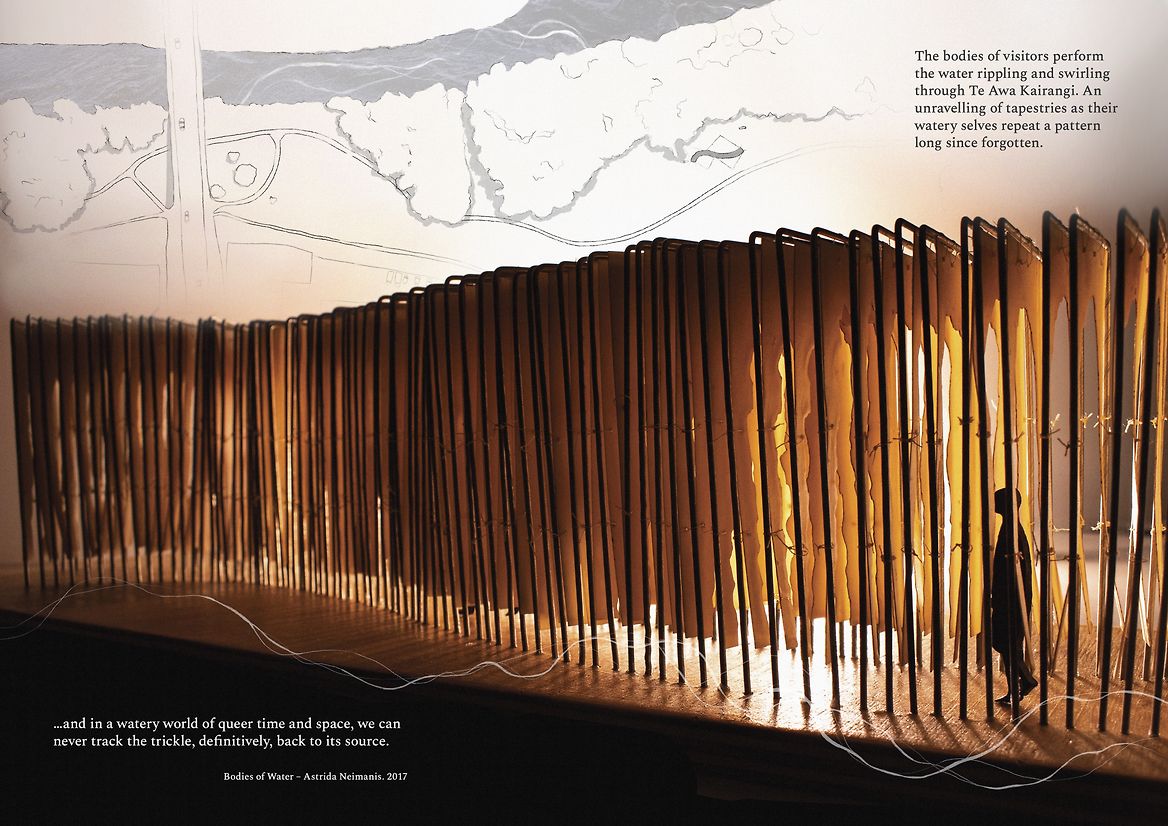
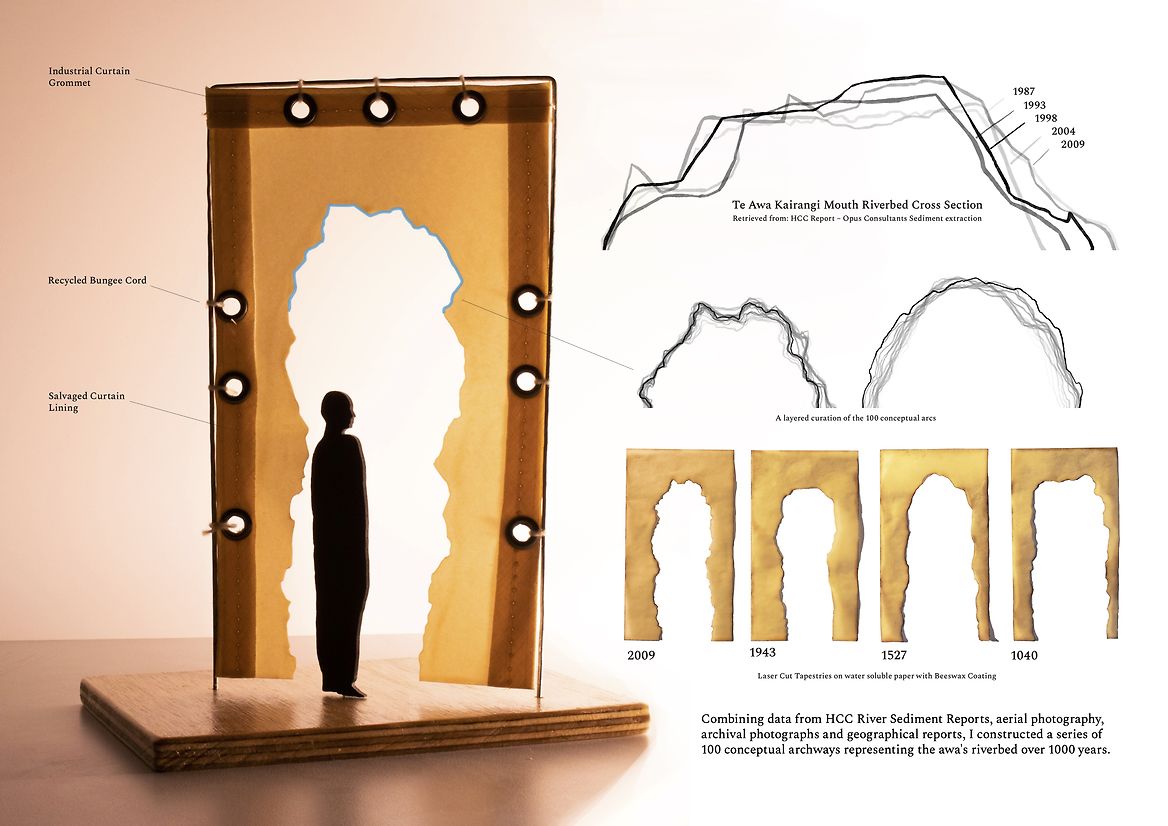
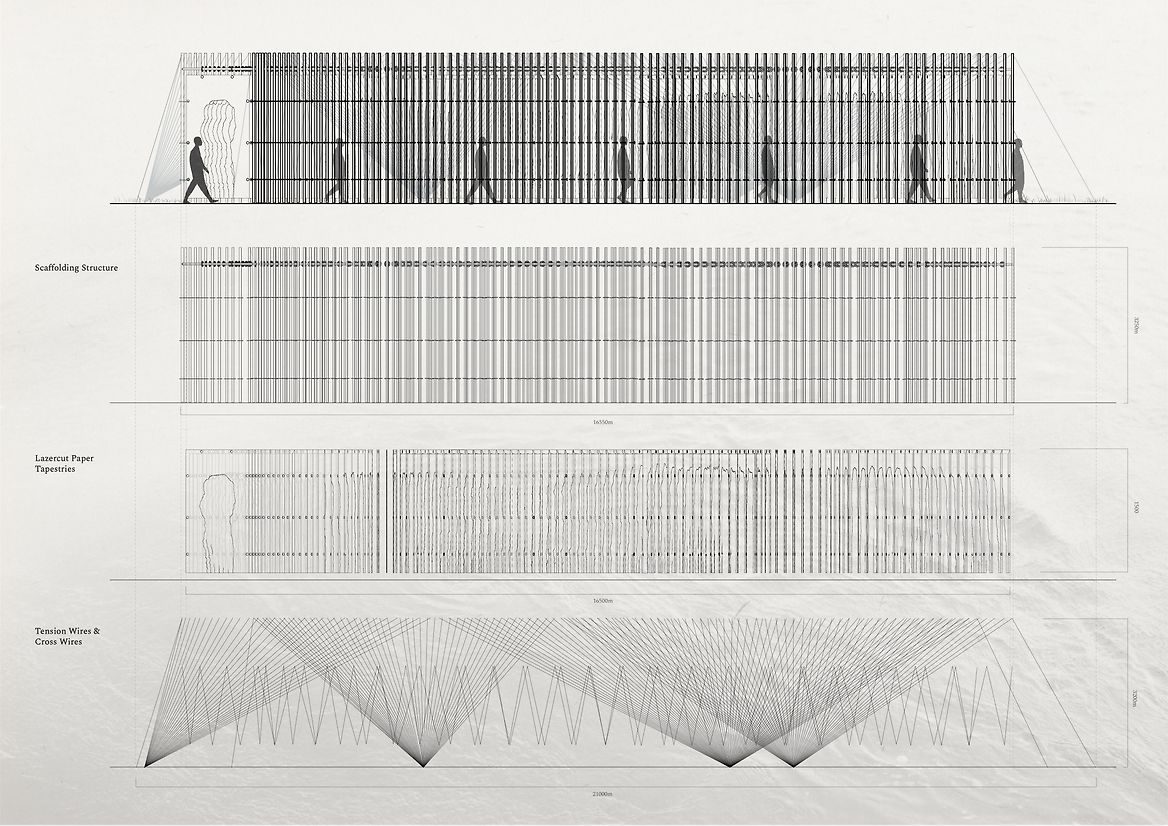
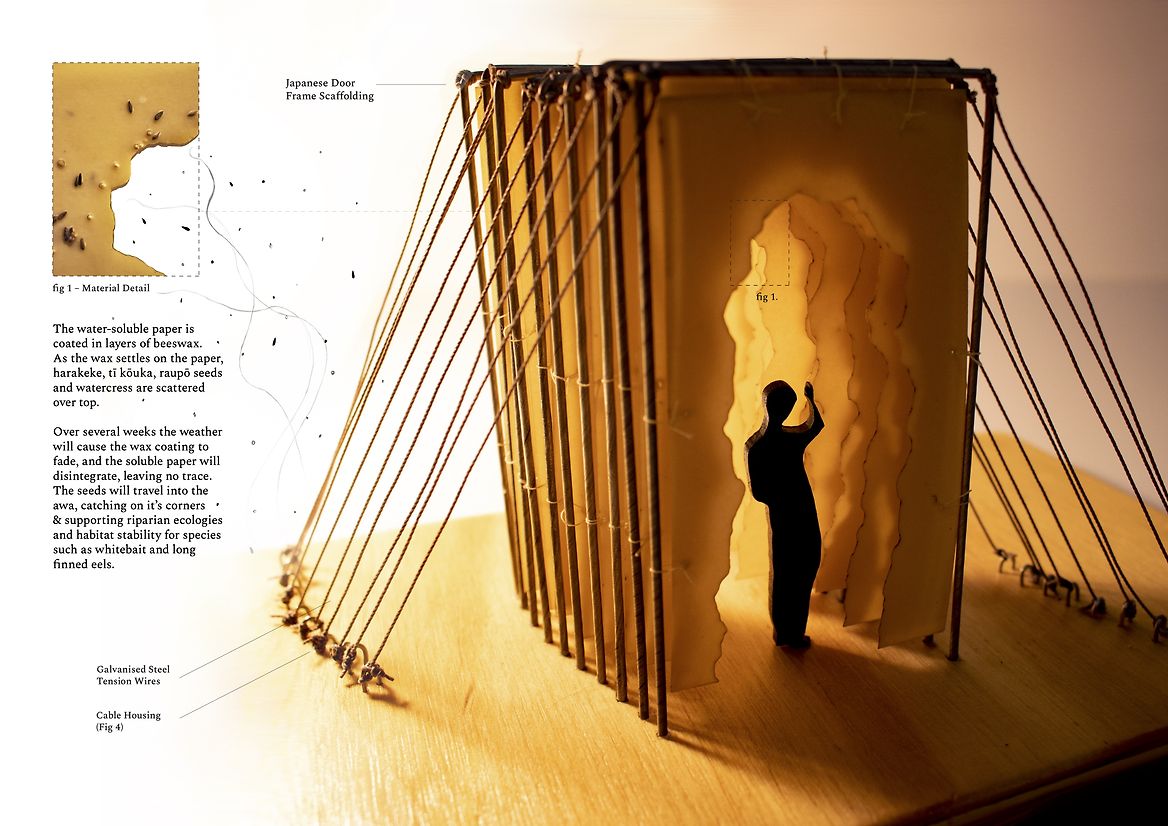
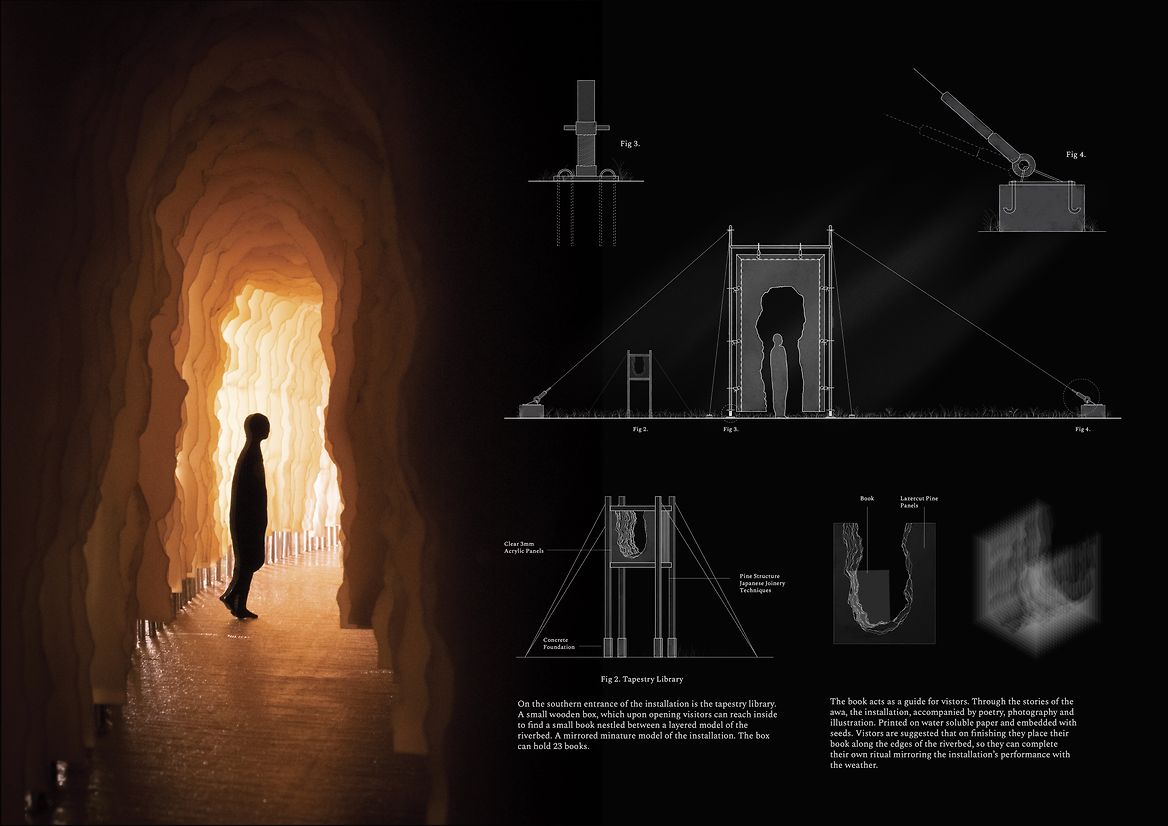
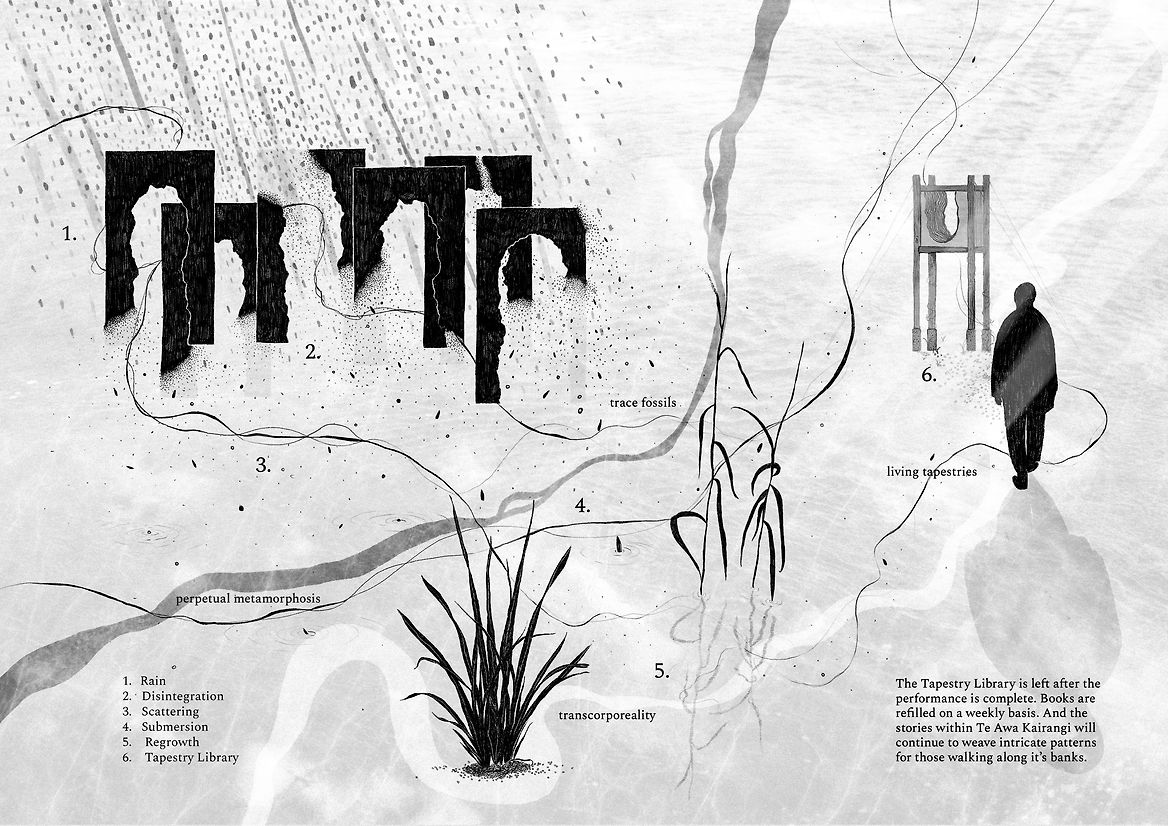
Description:
A Living Tapestry of Watery Bodies is a temporary performative installation taking place on the banks of Te Awakairangi (The Hutt River). We all hold our own tapestries – intricate weavings of stories, an interwoven web of tūpuna (ancestors) and uri (descendants), with threads deeply tied to our ecologies & environment. Wai (water) is the centre of life, and our bodies are watery archives. We hold rivers, oceans and tsunamis within us. 60-90% of our bodies are watery molecules that have been shifting and swirling the land for billions of years.
This spatial design proposal seeks to foster moments of connection between those walking along the banks of Te Awa Kairangi to their watery bodies and tapestries within. One hundred laser-cut thresholds are positioned on the corner of the riverbank, located outside the wind tunnel and where the willows embrace, casting fragmented shadows onto the earth. The thresholds are constructed from water-soluble paper and coated in layers of beeswax. While layering beeswax onto the sheets, harakeke, tī kouka, raupō and watercress
seeds are scattered over the top. Over several weeks the weather will cause the wax coating to fade, and the soluble paper will disintegrate, leaving no trace. The seeds will travel into the awa (river), in an act of rewilding, as they catch the corners of the awa, supporting the riparian ecologies and habitat stability for species such as whitebait and long-finned eels.
The thresholds hold the shape of the riverbed, changing over a thousand years. As people move and walk through the installation, their watery bodies perform the role of the awa, ebbing and flowing, rippling, swirling vibrations. An immersive experience where people can feel the carvings of Ngake’s tail on the land and see the wonder and wildness of Te Awa
Kairangi over a thousand years in time. While enabling those moving through to witness the direct implications of climate change and the dramatic changes of the last 100 years on the awa itself. A slippage through layers of time, space and memory to the watery futures of tomorrow.
This proposal was informed and underpinned by the principles outlined within the Riverlink Kaitiaki strategy developed by Taranaki Whānui advisors for the Riverbank Development of Te Awa Kairangi and published in Isthmus Group's 2021 Riverlink Urban & Landscape Design Framework. The framework was developed as a strategy to guide a holistic relationship centred on the reconnection and coexistence of the land, people and culture of Te Awa Kairangi.
Judge's comments:
Intertwining the poetic power of water with an ephemeral installation that engages both the senses and ecological consciousness, elegantly drawing together human connection, ancestral stories, and environmental stewardship along the riverbanks.